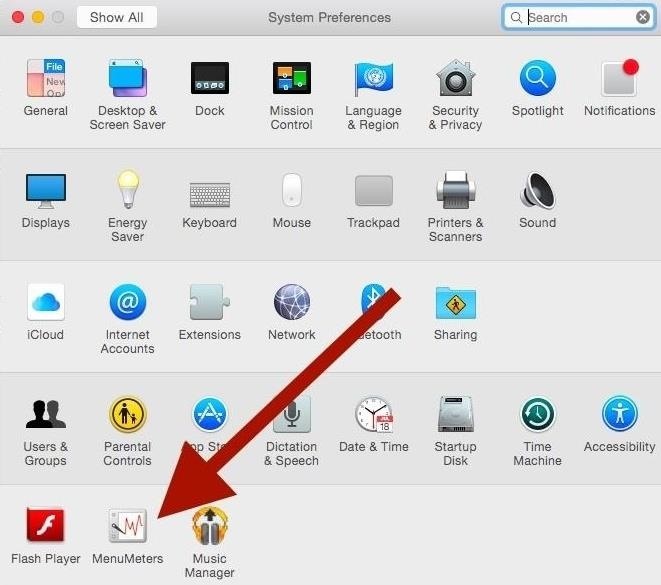

- #Memory monitor mac os x for mac os x
- #Memory monitor mac os x for mac os
- #Memory monitor mac os x mac os x
- #Memory monitor mac os x code
- #Memory monitor mac os x free
You might need to do this-there is a forever bug in Catalina that can make the Process Name column as wide as the screen-scroll right and drag the darn thing to get it back to reasonable size.

Sorting by name can be helpful, but a vendor may use all sorts of names without the vendor name (very annoying), such as "Core Sync" and "CCX Process" from Adobe, so it’s hard to pin down all the crapware associated with any particular application.In general, dthere is little you can do about daemon processes, as in most cases they just get respawned if force-killed.For example, Dreamwaver and Photoshop will chew up 3% of a CPU each for hours on end. Quit applications not in use, as many applications chew up enough CPU so that in total the system runs hotter and slower.But when something like accountsd just sits around and constantly chews up CPU cycles, that’s a useless major drag on system performance. dropdowns and other aspects match the new design of macOS 11 Big Sur. That’s what you want to see when you want a job done fast-lots of CPU cores in use. An advanced Mac system monitor for your menu bar, with CPU, GPU, memory, network. The two most useful metrics are % CPU and Real Mem along with Disk and Network statistics.īelow, real work is being done by 'java' (actually Integrit圜hecker). To see what processes are using CPU time, click on %CPU to sort so that the greatest usage is sorted at top (ditto for real memory and other useful metrics).

To view all processes in Activity Monitor, choose View => All Processes. I hope this simple tip makes your life a little “Bitt” easier.- SEND FEEDBACK Related: Apple, Apple macOS, macOS Activity Monitor, memoryĭiagnosing system issues often begins with Activity Monitor (/Applications/Utilities).īy default, only the current user processes are shown (pretty much useless). The Colors: These categories change depending on which set of data being displayed, but here is what the colors stand for, as far as Memory Usage goes. I am working with large arrays and like to know the memory usage by Matlab.3 answers Top answer: the Tips at the bottom to see. You should then see the icon display a chart I am running Matlab R2012b (64 bit) on a Mac OS (version 10.8.2) computer.
#Memory monitor mac os x free
My iMac has a 1TB hard disk and Id like to know where the free space is, which part is allocated to the display, etc.
#Memory monitor mac os x for mac os
I was wondering if something of the likes was available for Mac OS X. If you choose CPU Usage, it shows a bar that animates in real time similar to a band equalizer on stereo equipment. I remember that, back in the days of the Commodore 64, I had a Reference Book showing me which part of memory was assigned to do what. Note: Not all of the options display a pie chart. Control Click (right click) on the Activity Monitor Dock Icon and select the Data Set you would like it to display, “Memory Usage” in my case. This is what the Activity Monitor Icon looks like: First, navigate to your Applications > Utilities folder, find the Activity Monitor application, and drag it's icon onto your dock and release. CleanMyMac X has an automated CPU and memory monitors built-in, which can give you a real-time view of memory usage in your Macs menu bar. The Activity Monitor Dock Icon can display any of the following options, but only 1 at a time.ĬPU Usage, CPU History, Network Usage, Disk Activity, or Memory Usage. Open Activity Monitor on your Mac Select an app using a lot of memory Click the x icon on the top left of the screen This is straightforward, but theres a better way. By keeping this application in your dock, you can simply Control + click on it's dock icon and display a number of different charts to visualize the data, without keeping the application window itself open!
#Memory monitor mac os x mac os x
Mac OS X ships standard with an application called “Activity Monitor,” Located in your Applications > Utilities folder.
#Memory monitor mac os x for mac os x
For Mac OS X 10.2 and earlier, there is still Memory Monitor 1.2.3 available.
#Memory monitor mac os x code
(mostly because of heavy Adobe Apps) If you are like me, you want to know how much of your precious memory you have left, so as not to launch that one extra application that crashes your machine and causes you to lose unsaved work. From the developer: Memory Monitor (running on Mac OS X 10.3 to 10.7, source code included) is a little Mac OS X application that displays the memory usage in its Dock icon (and optionally in a floating window), like CPU Monitor displays the CPU usage. This comes standard with every new Mac running OS X.īeing involved with web design, and design in general, I find myself needing to monitor my memory usage on a daily basis. This is a quick way to have easy visual access to your memory usage without having to rely on a Dashboard Widget, or even have Dashboard running for that matter.


 0 kommentar(er)
0 kommentar(er)
